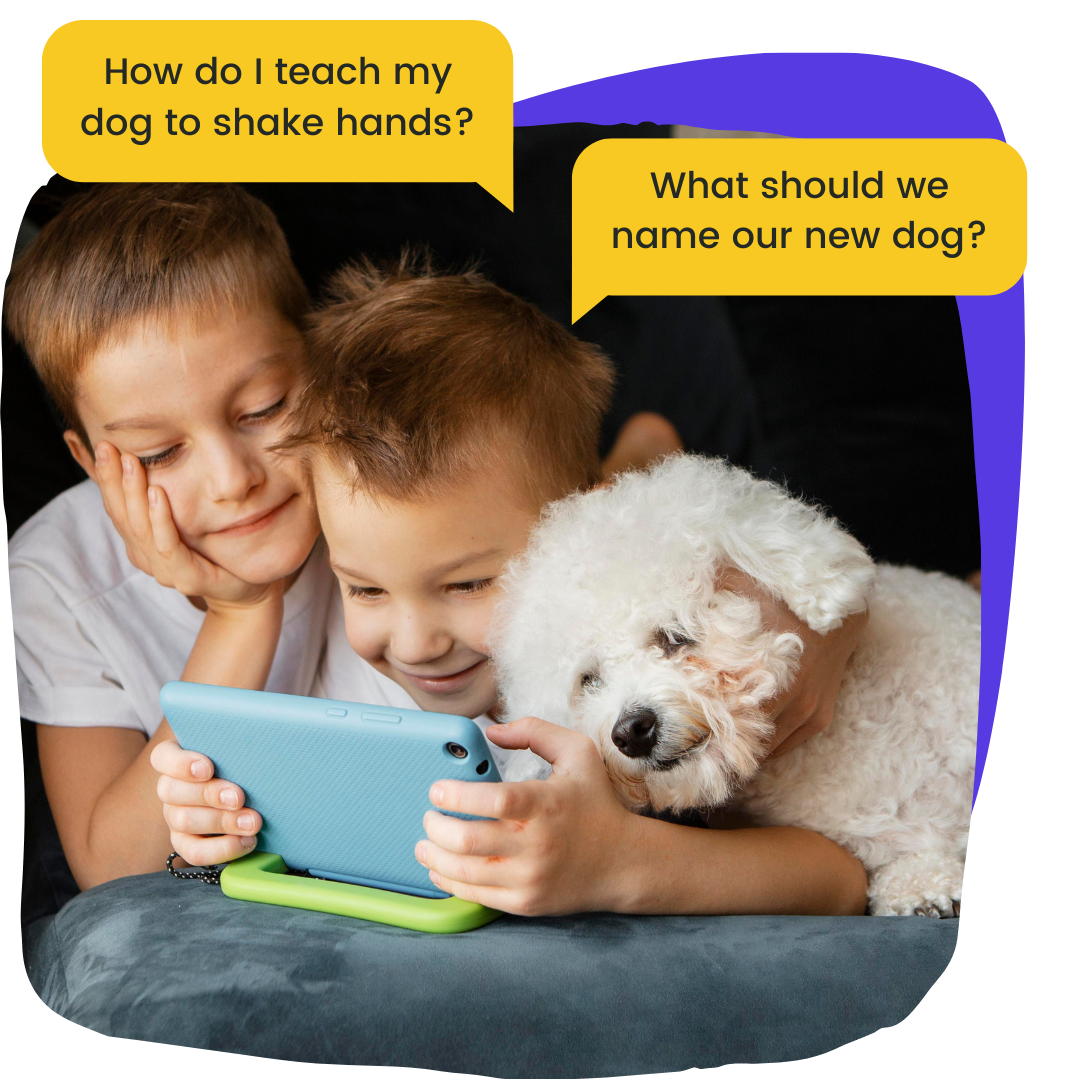AI Chatbots for Kids: What Parents Should Know
-1.png)
AI chatbots are popping up in study apps, smart speakers—even the family TV remote. Your child may already be asking Gemini for homework help or using ChatGPT to write silly poems. AI assistants feel magical to kids—but they’re also uncharted territory for parents. But just like social media, chatbots come with hidden dangers. Here’s a quick primer on the risks and the safest way for kids to explore this powerful technology.
Why Chatbots Can Be Tricky for Kids
- They sound sure, even when they’re wrong. Large‑language models can invent facts or biased opinions, leaving kids confused.
- Kids bond with bots. A friendly AI can feel like a secret pal, leading children to overshare personal struggles. Remember, AI is engineered to please—its goal is to keep the conversation positive and engaging. In a more intimate context that becomes problematic: it’s a “friend” who never challenges or corrects you, so kids may not learn healthy push‑back or critical reflection.
- Guardrails vary. Some apps filter mature content; others don’t. Age gates are easy to skip.
- 24/7 access fuels anxiety. Late‑night chats keep brains buzzing when kids should be sleeping.
How to Support Your Child in Navigating Chatbots
1. Start the Conversation Early
Ask what your child has tried, what felt helpful, and what felt “off.” Make it safe for them to share weird or scary answers they see.
2. Set Chatbot Boundaries Together
Agree on simple rules: keep personal info private, double‑check answers, and log off by bedtime.
3. Role‑Play Tough Moments
Practice what to do if a bot gives risky advice or asks for personal details. Try using PinwheelGPT to act out scenarios in a safe space.
4. Model Healthy Skepticism
When you use AI yourself, think aloud: “Let’s verify that with a trusted site.” Show that machines aren’t always right.
PinwheelGPT: Safe AI in Your Child’s Pocket
We designed PinwheelGPT so kids can explore AI without wandering into the wild west:
- Clean‑content filter stops profanity, violence, and sexual topics before they appear.
- Parent Portal transparency shows every prompt and response—no secret chats and also the opportunity to correct errors.
- Smart quiet times mute the bot during school and sleep hours, so real life stays front and center.
Try it: Open the PinwheelGPT app and ask, “Give me three screen‑free ideas for a rainy afternoon.” Read the suggestions together—then pick one to do!
Final Thoughts
AI isn’t going away, but with clear family rules and a kid‑safe tool like Pinwheel GPT, your child can reap the benefits without the baggage. Guided exploration today builds the critical‑thinking muscles they’ll need for tomorrow’s tech.
Share this post with another parent who’s curious about AI—and tell us how your family is using PinwheelGPT!
Related Articles
Speak-Kindly Checklist: Kid-Phone Version!
Have you ever caught yourself speaking in a way that was a little harsher than you expected? Even as adults, the way we communicate can get out of line at times,...
PinwheelGPT: Safe and simple AI for kids
As founder of Pinwheel, I've spent years thinking about how technology impacts our children's development. When we began exploring AI for kids, one question kept coming...
What Does "Healthy Kid Phone" Mean?
Pinwheel named as a kid's top alternative to smartphones. The Wall Street Journal featured Pinwheel as one of the best ways for parents to keep in touch with their young...
-1.jpg)

-3.jpg)